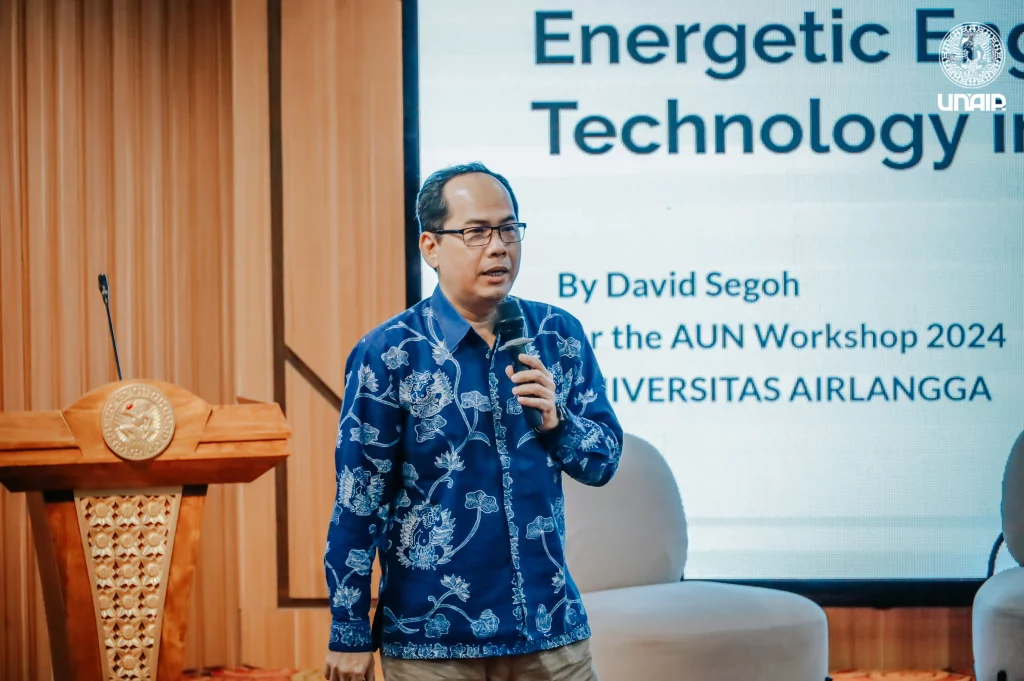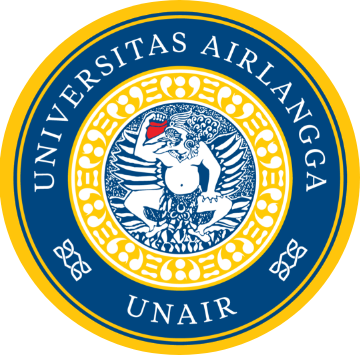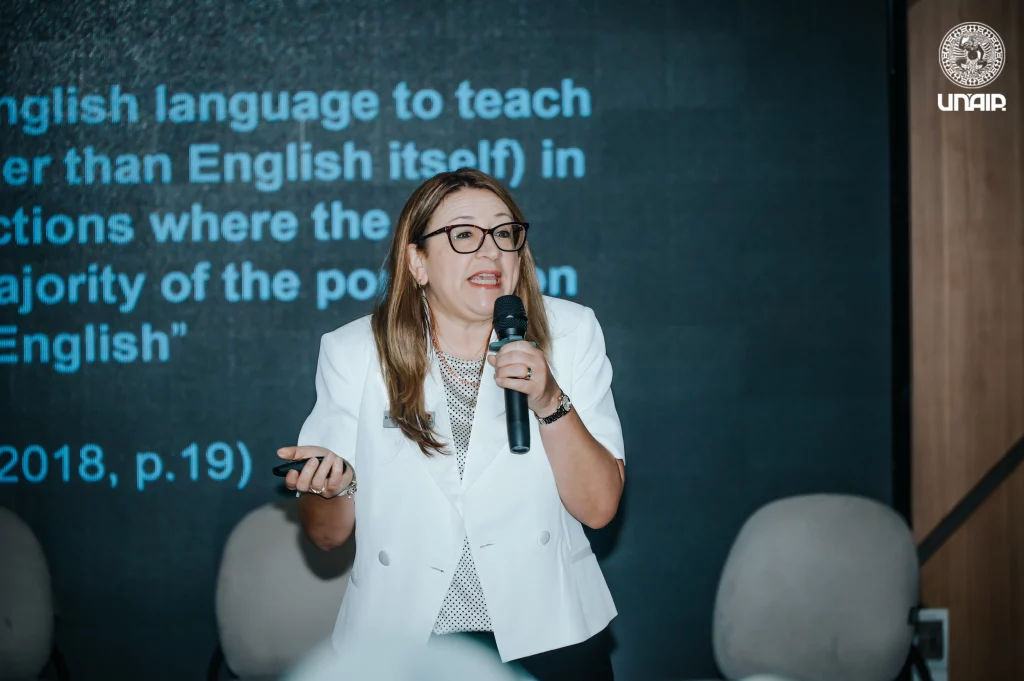UNAIR NEWS – Modern education calls for approaches that are dynamic and adaptable, especially when teaching English as medium of instruction (EMI). Despite its importance, the adoption of EMI in higher education remains limited. To address this, UNAIR’s Airlangga Global Engagement (AGE), in partnership with Macquarie University, Australia, held a seminar on Wednesday (November 13, 2024), aimed at advancing EMI-based instructional practices.
The seminar, hosted at Majapahit Hall, ASEEC Tower on UNAIR’s Dharmawangsa-B campus, featured speakers including Associate Professor Pamela Humphrey from Macquarie University, NEAS Australia CEO Adam Kilburn, and David Segoh, SS, M.Ed., Ph.D., a lecturer from UNAIR’s Faculty of Humanities.
Benefits and challenges of EMI
In the opening session, Assoc. Prof. Pamela Humphrey discussed the concept of English Medium Instruction, describing it as a key educational strategy that prioritizes both content and language instruction in English. ” Some consider EMI a content-driven approach, often sidelining language learning,” she explained.
EMI is commonly applied in countries where English is not the primary language, enabling the teaching of academic subjects in English. EMI operates on a continuum with varying degrees of focus on either content or language.
Prof. Humphrey highlighted two main models within this EMI continuum: language-based, such as English for Academic Purposes (EAP), and content-based, such as Content and Language Integrated Learning (CLIL) or Content-Based Teaching (CBT). She emphasized that EMI facilitates internationalization, attracting students from around the world, boosting university rankings, and increasing students’ opportunities to study abroad.

Technology as key facilitator
David Segoh from UNAIR’s Faculty of Humanities discussed the role of technology in overcoming language barriers and enhancing the quality of EMI learning. “With language apps and online platforms that ease access to English materials, learning becomes more dynamic and interactive,” he said.
Segoh encouraged educators to creatively utilize available technology to reduce language barriers, allowing students to better engage with the material. ” Technology is not just a tool; it’s a means to make EMI classrooms more dynamic and engaging,” he added.
This seminar provided an essential platform for educators and students to explore new strategies for implementing EMI. The collaboration between Universitas Airlangga and Macquarie University demonstrates a shared commitment to advancing the internationalization of education in Indonesia.
Author: Sintya Alfafa
Editor: Edwin Fatahuddin









